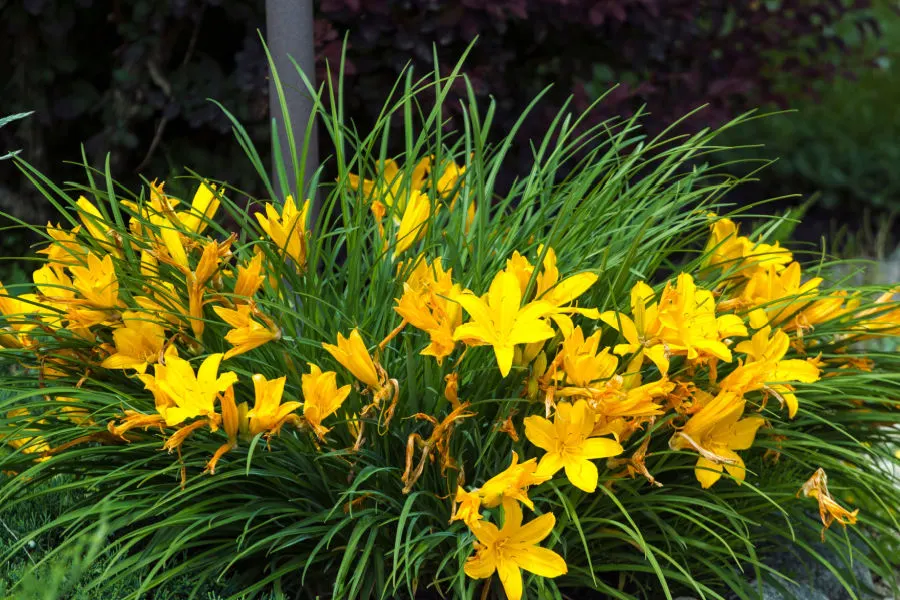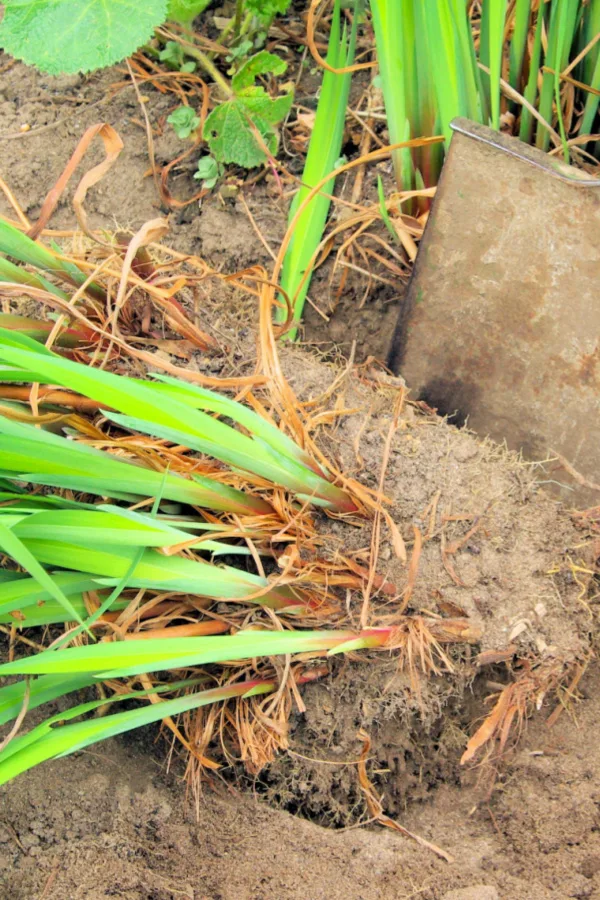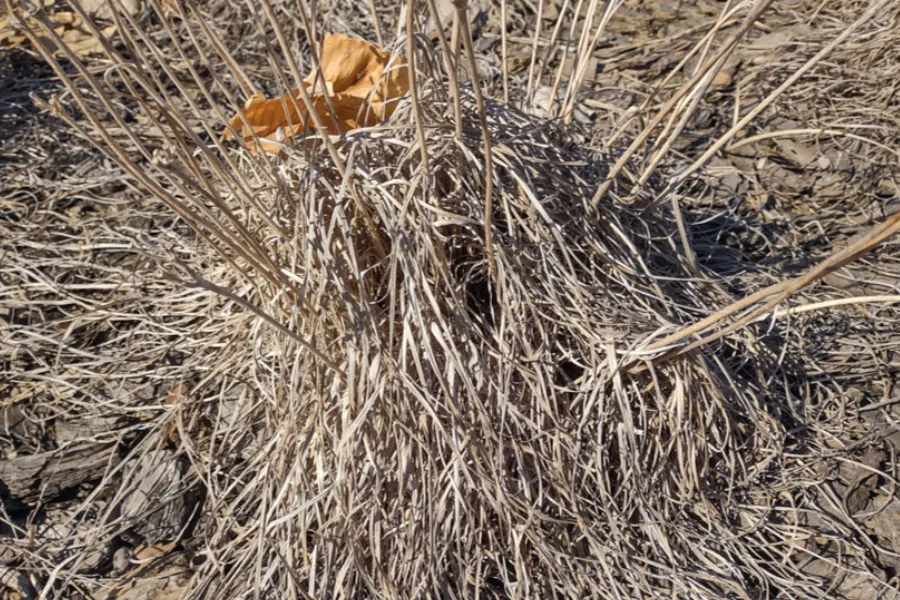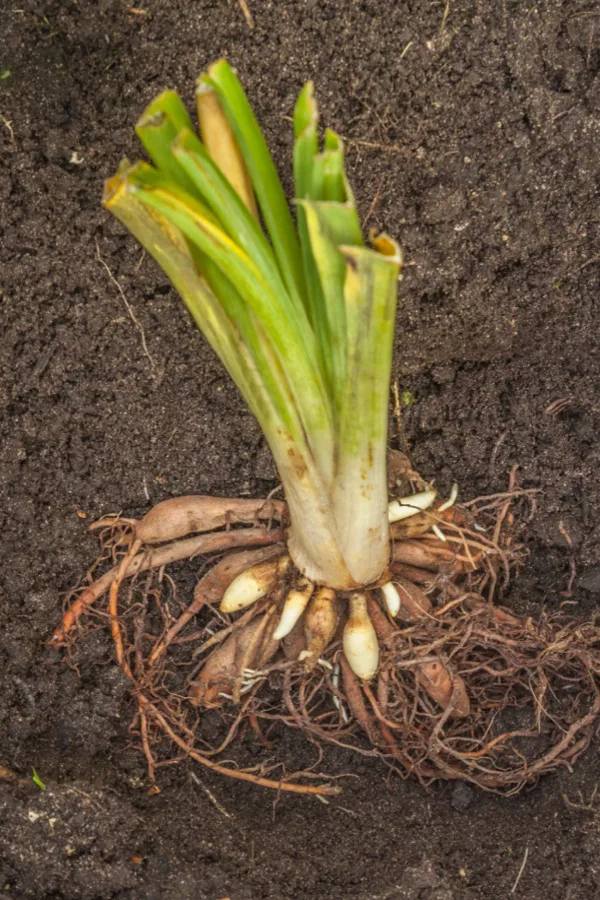Autumn is in the air, and that means it is time for a little fall daylily care! Fall is not only a great time to clean up your daylilies and get them ready for winter – but also the perfect time to divide, split and transplant plants that have become too large for their space.
By late summer and early fall, daylily plants begin to show a lot of wear and tear. Not only do they usually stop blooming, they also begin to slowly die back. Even popular everblooming varieties like Stella d’oro have their foliage start to brown off as fall arrives.
Once a daylily’s foliage begins to die back, there is no turning back for the plant. It will continue to brown off until its foliage completely dies off as it goes dormant for winter.

Unfortunately, as the daylilies go through this process in early to mid-fall, it can leave flowerbeds looking less than their best. Not only is the decaying foliage unsightly, most varieties of daylilies also produce an oblong seed pod late in the season that is not exactly a showstopper to look at either.
For all of these reasons and more, that is exactly why fall is the perfect time for daylily maintenance. With that in mind, here is a look at what to do with your daylilies this fall!
Fall Daylily Care – What To Do With Your Daylilies In The Fall
Cutting Back
Although cutting back your daylilies is not necessary for the plant’s survival over winter, there are several advantages to removing the dying foliage in the fall.
First and foremost, it keeps your beds looking fresh and clean. Nothing will draw your eye more to a bed than brown or dying foliage. But even more, by removing decaying foliage, you help prevent insects, mice and other pests from overwintering in bed spaces. Simply put, decaying foliage is an easy place for small creatures to both hide and nest.

In addition, removing all of the decaying plant matter has its advantages for the following growing season. With the old foliage gone, plants have an easier time sprouting through the surface in the spring. Even more, all of that decaying foliage is perfect for the compost pile. And by cutting back in the fall, you can get it composting faster than ever.
To cut back your daylilies, a sharp pair of hedge trimmers is the best tool of choice. Move the blades under the plant and cut the foliage back to around an inch above the ground. If you have a lot of daylilies, a cordless hedge trimmer can make quick work of this task. It’s also great for cutting back ornamental grasses too! Product Link: B&D Cordless Hedge Trimmer
To Divide, Or Not To Divide – Fall Daylily Care
Once you have cut back your daylilies, it will be easy to see how large the plant has become. This will be your determining factor for whether or not you need to divide.
As daylilies age and grow, their roots can begin to become a tangled mess and grow together. As they do, the plants can have a harder time absorbing the moisture and nutrients. Both, of course, which they need to grow and bloom.
If your daylilies have stopped blooming or are blooming far less, this is usually the culprit. To keep daylilies healthy and strong, it is best to divide their root clumps every three to five years. This keeps roots from becoming too overgrown, and allows for more prolific blooming.

If your plants do not require dividing, you can finish your fall clean up quickly with a little bit of compost and mulch. Once the plants have been cut back, apply a few inches of compost to the plant. Simply place the compost over the top of the cut foliage, and let it work down around the plant.
Compost is a great way to provide slow-release power for the plant as it comes out of dormancy next spring. That in turn can lead to healthier growth and better blooms.
Finish by covering the plant with a two to three inch layer of mulch. The mulch will help protect the plant through winter and keep out competing weeds. (See : How To Mulch Flowerbeds To Stop Weeds)
How To Divide Overgrown Daylilies – Fall Daylily Care
If your daylilies have grown too large, fall is a great time to dig them up and divide them. Especially since you have already cut the plant back and can now easily see and get to the roots!
To divide your plants, use a sharp shovel and dig around the outer edges of the plant. Set the blade back about an inch from the edge of the plant. Next, slice down into the soil three to four inches deep. Daylilies do not have excessively large roots, so once you have dug around the edges, the plant should lift out of the soil fairly easily.

Now that the plant is out, turn the root ball over. Slicing from the underside of the daylily will make creating divisions a breeze. When turned over, it is much easier to see the true size of the roots and make accurate cuts.
To cut, simply use your shovel and slice down through the plants. It is important to remember the size of the transplant you create will directly correspond with how large the plant will grow next year. For an average clump that is around a foot in diameter, quartering the plant will create four nice-sized size transplants.
Transplanting – Fall Daylily Care
Transplanting daylilies in the fall couldn’t be easier! Simply dig your new planting holes to about twice the diameter of the new transplant’s root section and a few inches deeper.
To plant, fill the bottom of your planting hole with a few inches of compost. Next, fill in around the plant with a 50/50 mix of soil and compost. This will not only provide quick nutrients to your daylily, it will also make it easy for the roots to set into the soil.

Finish by watering your new transplants in and adding a few inches of mulch for winter protection. Depending on how early in the fall you transplant, you may see new green growth appear. It will eventually die back with a frost, but will not be damaged.
Once spring arrives, your new transplants will be ready to hit the ground growing, and should bloom during their first growing season. Here is taking care of your daylilies this fall, and to a flush of blooms next summer!
Follow Our Facebook Page For Great Gardening Tips And Advice! This Is My Garden Facebook Page
This Is My Garden is a garden website created by gardeners, for gardeners. Jim and Mary Competti have been writing gardening, DIY and recipe articles and books and speaking for over 15 years from their 46 acre Ohio farm. They publish three articles every week, 52 weeks a year. Sign up today to follow via email, or follow along!
